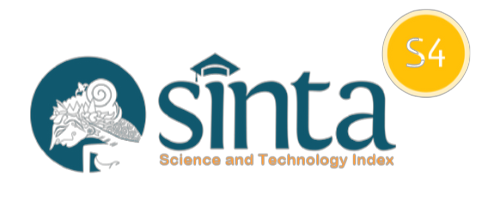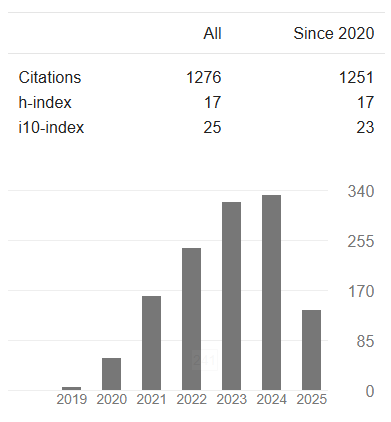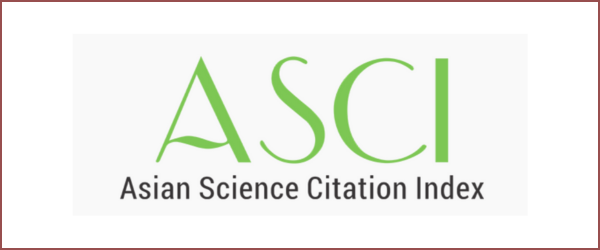Islamic Stock Overreaction Phenomenon on Financial Statement: An Event Study
DOI:
https://doi.org/10.14421/EkBis.2021.5.1.1304Keywords:
Event Study, Overreaction, Market Adjusted Model.Abstract
The purpose of this study is to examine whether there is an overreaction phenomenon in the announcement of financial statements during the observation period. The sample used in this study are stocks listed on the Indonesia Stock Exchange in the Jakarta Islamic Index (JII) category during the 2016-2018 period. T test results on the winner category stock prior to the announcement of the financial statement event which AAR value tends to be negative then AAR changed to positive on the date of the announcement of financial statements. On the contrary, AAR was seen to remain positive and statistically significant even to the 10th day after the announcement of the financial statements. After the announcement of the financial statements, investors do not appear to correct stock prices as an indication that they have overreacted. It’s shows that there was no reversal after the announcement of the financial statements. AAR loser and winner shares did not experience a reversal after the announcement of the financial statements. Results indicate that there is no overreaction phenomenon in the announcement of financial statements on the Indonesia Stock ExchangeDownloads
 Abstract viewed: 519 times
|
Abstract viewed: 519 times
|
 PDF downloaded = 396 times
PDF downloaded = 396 times
References
Alwathnani, A. M., Dubofsky, D. A., & Al-Zoubi, H. A. (2017). Under-or-overreaction: Market responses to announcements of earnings surprises. International Review of Financial Analysis, 52, 160–171.
Angelovska, J. (2017). Long and Short-Term Dynamic Relationship between Macedonian and Croatian Stock Markets. Zagreb International Review of Economics and Business, 20(2), 11–20. https://doi.org/10.1515/zireb-2017-0014
Arin, K. P., Spagnolo, N., Francis, X., Piotr, T., Hamzah, M. A., Baker, M., Wurgler, J., Bekaert, G., Harvey, C. R., Engle, R. F., Rangel, J. G., Adrian, T., Barberis, N., Blanchard, O., Bouchaud, J., Campbell, J., Chernozhukov, V., Derman, E., Diamond, P., Avramov, D. (2006). Www.Econstor.Eu. Economics Letters, 21(3), 461–504.
Baghestani, H., & Abu Al-Foul, B. (2010). Factors influencing Federal Reserve forecasts of inflation. Journal of Economic Studies, 37(2), 196–207.
Beigi, F., Hosseini, M., & Qodsi, S. (2016). The Effect of the Earning Transparency on cost of capital common stock based on The Fama-French and Momentum Factors. Procedia Economics and Finance, 36(2005), 244–255.
Boubaker, S., Farag, H., & Nguyen, D. K. (2015). Short-term overreaction to specific events: Evidence from an emerging market. Research in International Business and Finance, 35, 153–165.
Brown, S. J., & Warner, J. B. (1980). Measuring security price performance. Journal of Financial Economics, 8(3), 205–258.
Brown, S. J., & Warner, J. B. (1985). Using daily stock returns. Journal of Financial Economics, 14(1), 3–31.
De Bondt, W. F. M., & Thaler, R. (1985). Does the Stock Market Overreact? The Journal of Finance, 40(3), 793–805.
Fama, E. F. (1970). Efficient Capital Markets: A Review of Theory and Empirical Work. The Journal of Finance, 25(2), 383.
Grey, C., Stathopoulos, K., & Walker, M. (2013). The impact of executive pay on the disclosure of alternative earnings per share figures. International Review of Financial Analysis, 29, 227–236.
Grohmann, A. (2018). Financial literacy and financial behavior: Evidence from the emerging Asian middle class. Pacific Basin Finance Journal, 48(November 2017), 129–143. https://doi.org/10.1016/j.pacfin.2018.01.007
Guru, B. K., & Yadav, I. S. (2019). Financial development and economic growth: panel evidence from BRICS. Journal of Economics, Finance and Administrative Science, 24(47), 113–126. https://doi.org/10.1108/JEFAS-12-2017-0125
Kendall, M. G., & Hill, A. B. (1953). The Analysis of Economic Time-Series-Part I: Prices. Journal of the Royal Statistical Society. Series A (General), 116(1), 11.
Khatua, S., & Pradhan, H. K. (2014). Examining Overreaction in Indian Stock Market for Quarterly News. EMAJ: Emerging Markets Journal, 4(1), 1–16. https://doi.org/10.5195/EMAJ.2014.57
Larson, S. J., & Madura, J. (2003). What Drives Stock Price Behavior Following Extreme One-Day Returns. Journal of Financial Research, 26(1), 113–127.
Law, S. H., & Ibrahim, M. H. (2014). The response of sectoral returns to macroeconomic shocks in the Malaysian stock market. In Malaysian Journal of Economic Studies (Vol. 51, Issue 2, pp. 183–199).
Mackinlay, A. C. (2008). Event Studies in Economics and Finance. Journal of Economic Literature, 35(1), 13–39.
Muñoz-Murillo, M., Álvarez-Franco, P. B., & Restrepo-Tobón, D. A. (2020). The role of cognitive abilities on financial literacy: New experimental evidence. Journal of Behavioral and Experimental Economics , 84(February 2019), 101482.
Nugraha, S. S., & Setiawan, I. (2020). Effect of BI Rate, Inflation and Index Dow Jones Against Jakarta Islamic Index (JII). EkBis: Jurnal Ekonomi Dan Bisnis, 3(1), 213–220.
Payne, J. E. (2008). Inflation and inflation uncertainty: Evidence from the Caribbean region. Journal of Economic Studies, 35(6), 501–511.
Schellhorn, C., & Sharma, R. (2013). Using the Rasch model to rank firms by managerial ability. Managerial Finance, 39(3), 306–319.
Tversky, A., & Kahneman, D. (1974). Judgment under Uncertainty: Heuristics and Biases. Science, 185(4157), 1124–1131.





























 This work is licensed under a
This work is licensed under a 